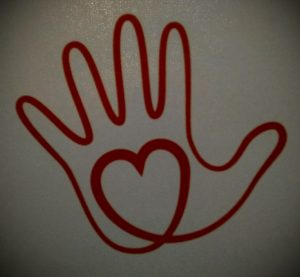DEAR YOGIS,
We are a few days away yet from the opening up of Regional Victoria, and maybe the rest of the State. Now is the time to hit the books, do the study you don’t usually have time for.
ZOOM SCHEDULE for the rest of the week:
Wednesday 5.30pm Zoom Restorative Yoga All welcome – (email me for ID)
Friday 6.45 Zoom Tarot Class. Sunday 10am CCP Training (all welcome – TO BOTH/ALL)
NOTICE TO MASSEURS/Yogis…..Stretching doesn’t work.
This timely message was prompted by an article by a well known American Masseur that I read all the time – Charles Duff. He massages/thinks like Tom Bowen (very yogic). He doesn’t focus on the pain, he sees the problem.
Everybody’s obsessed with stretching. The minute they see tight hamstrings, pecs, etc., and all they want to do is stretch them out. Have you found this – sure you have!
Students and clients will tell you “it feels good”, and it does. And don’t get me wrong, stretching is super effective—IF you’ve properly prepared the muscles ahead of time. But this isolated focus on stretching is misguided – it is the way of the physio, not the way of the yogi. Imagine trying to stretch a frozen shoulder client’s subscapularis or pec muscles independently of any others. Once the screaming stops and they’re done kicking you, maybe then you’ll see what a bad idea that was. It doesn’t work.
Listen up. Tight muscles are tight for a reason. As I have said many times before…. they are scared!
And until you understand that reason, you won’t be able to stretch the muscle. The body will just shut it down – it is protecting you against a presumed pain. Here’s why: we have sensory organs wound into our muscle fibers, called spindles, that report the degree and speed of stretch to the central nervous system. If the body feels a muscle is being stretched too quickly or is in danger of injury, it will ALWAYS engage that muscle to PREVENT it from stretching, a process known as the stretch response (or the pain response). Which has the opposite of the intended effect.
Remember, to the body, referred pain is real. Referred pain and taut fibers throw off the spindles and can trigger the stretch response. Very often, the pain comes from the other side of the joint (the shortening muscles), or the other side of the body. A pain in the right hip could be referred from the left shoulder!
I have mentioned this in many previous classes, almost to the point of exhaustion —but I’m bringing it up again, because it’s crucially important, and most yogis and masseurs miss this. They’re only thinking about the muscle that won’t stretch.
In the case of frozen shoulder for instance, our adaptive, protective posture rounds the shoulders and keeps the arm across the abdomen. That means muscles like the pec major, pec minor, and serratus anterior have adaptively shortened. The remedy can be clearly seen and experienced in The Bowen method. Tom Bowen really understood this and used this knowledge in all his work. First, (no matter the “pain”), unlock the back.
 That rounded shoulder posture pulls the mid- and lower trapezius muscles get pulled into chronic stretch. Those muscles then become hard and weak as the body uses taut fibers and trigger points to try and stabilize the trapezius in its battle against the rounding shoulders. It is like dealing with a tortoise shell. Hard. We have to address the rounded shoulder posture, or the pain will just come back. But trying to stretch the pecs won’t work—the client will feel pain and cramping between their shoulder blades, due to the contraction in the trapezius muscle. I am sure you have all experienced this in your self or your client.
That rounded shoulder posture pulls the mid- and lower trapezius muscles get pulled into chronic stretch. Those muscles then become hard and weak as the body uses taut fibers and trigger points to try and stabilize the trapezius in its battle against the rounding shoulders. It is like dealing with a tortoise shell. Hard. We have to address the rounded shoulder posture, or the pain will just come back. But trying to stretch the pecs won’t work—the client will feel pain and cramping between their shoulder blades, due to the contraction in the trapezius muscle. I am sure you have all experienced this in your self or your client.
All the muscles involved in functional movement must have normal length and movement to maintain health.
If you try and stretch the pecs and serratus by themselves, it would lead to imbalance. The brain/body knows this and the pain in the back will trigger the stretch response and shut it down. Which is just another reason people see frozen shoulder as “untreatable.” Nobody gets this – Except my students of course (The ones that are listening). The funny thing is that sometimes you can release the muscles in the back, and then the anterior muscles will stretch effortlessly—because you’ve brokered a truce in the conflict. You’ve coached the body back toward healthy, pain-free movement.
Our methods work. Try them out on your clients. This is the way that you will be most effective in class and on the massage table. First you have to understand what is happening, not just go for the presumed easy answer. In Massage (and yoga) the site of the pain is rarely the site of the injury. Look elsewhere, understand how the body works and ask the right questions. Good book? ANATOMY TRAINS by THOMAS MYERS.
I will see you on the mat or the massage table.
NAMASTE – JAHNE



